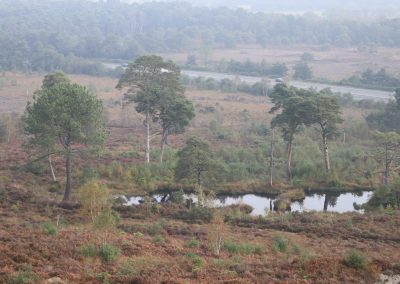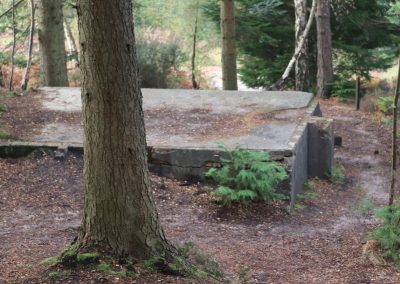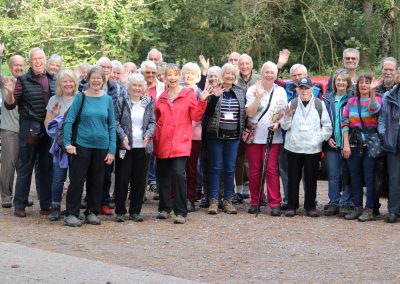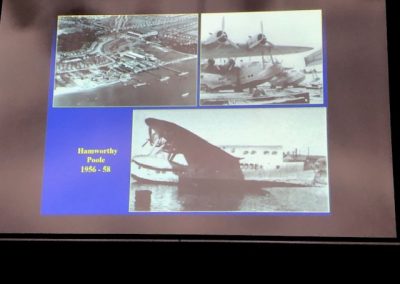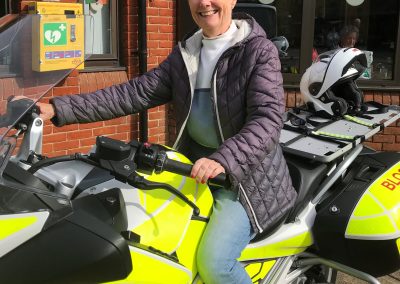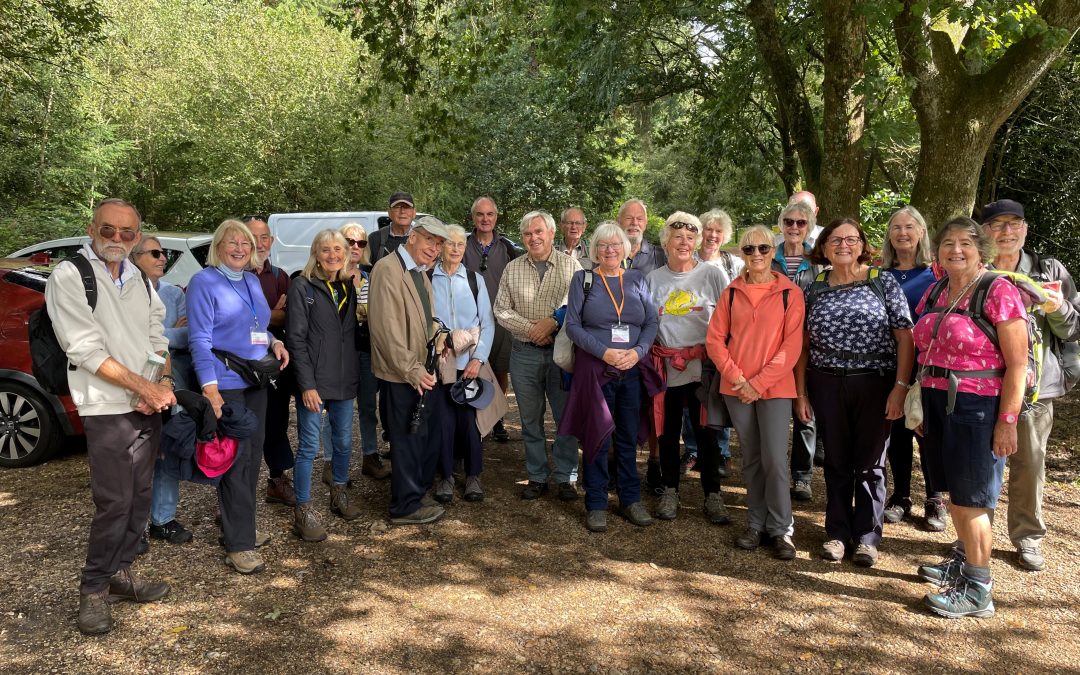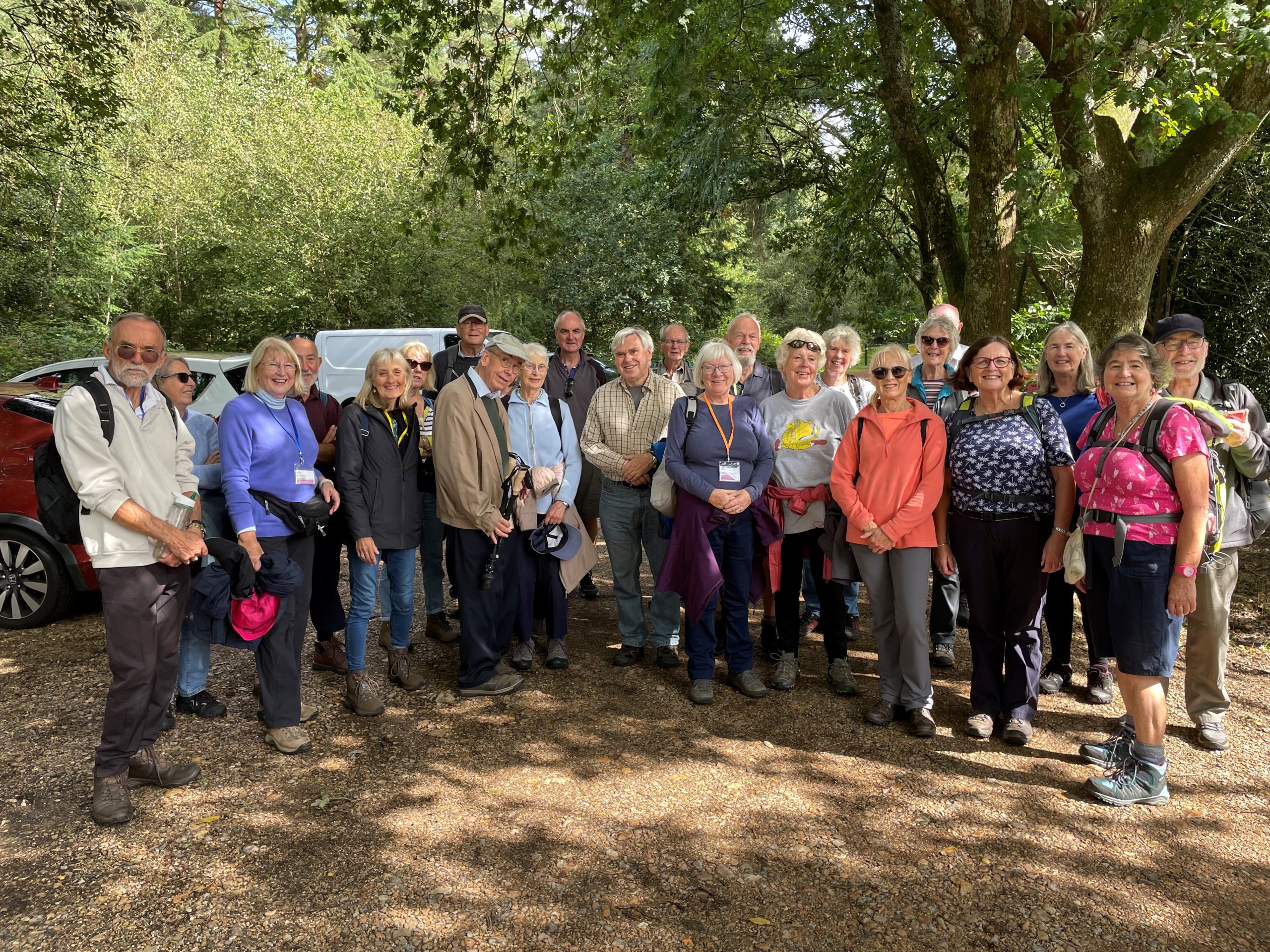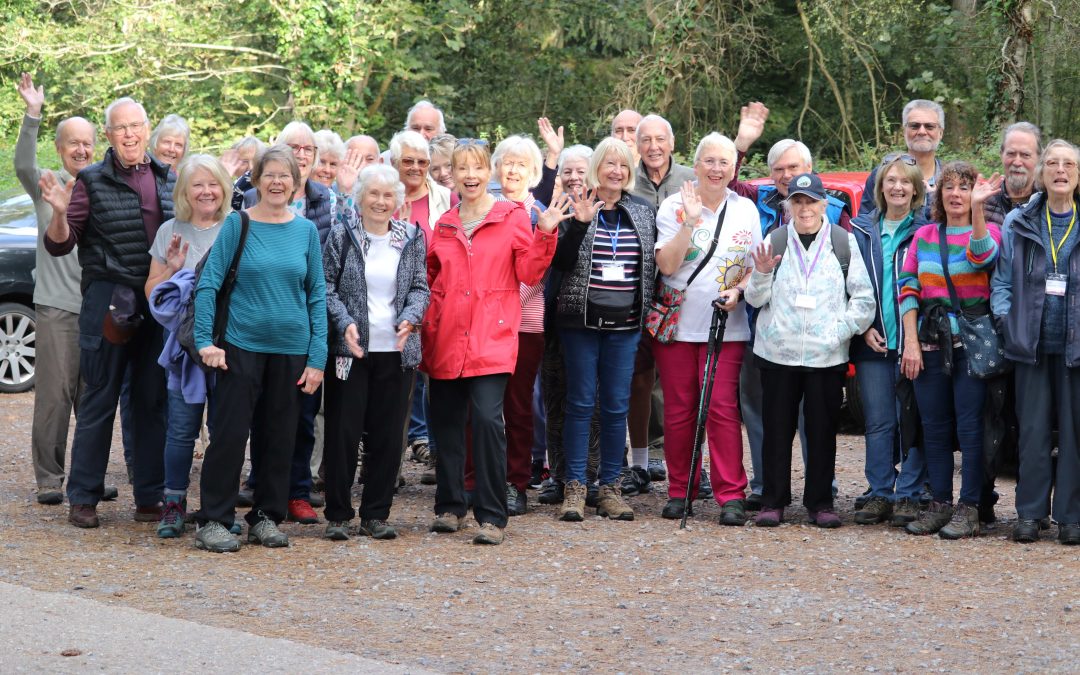
Saturday Walks: RAMSDOWN HILL, HURN
30 members of the FU3A Saturday Walk Group turned out for the first walk of the term on Saturday 7th October. It was a beautiful day, plenty of sunshine and a really pleasant day for a ramble. The 360 degree view from the flat top of the hill was excellent as the early morning mist had melted away.
The return walk back down the hill featured a look at the remains of the concrete footings of buildings used during WW2 to house members of the armed forces who manned the anti-aircraft guns, the radar and the search lights that helped to defend not only RAF Hurn but Ibsley and the other RAF Bases in the New Forest, below. (see photo)
Thanks were given to Clare Clayton for her work in organising the walk. Some members went on to take coffee at the Avon Causeway Hotel just a few yards down the road.

